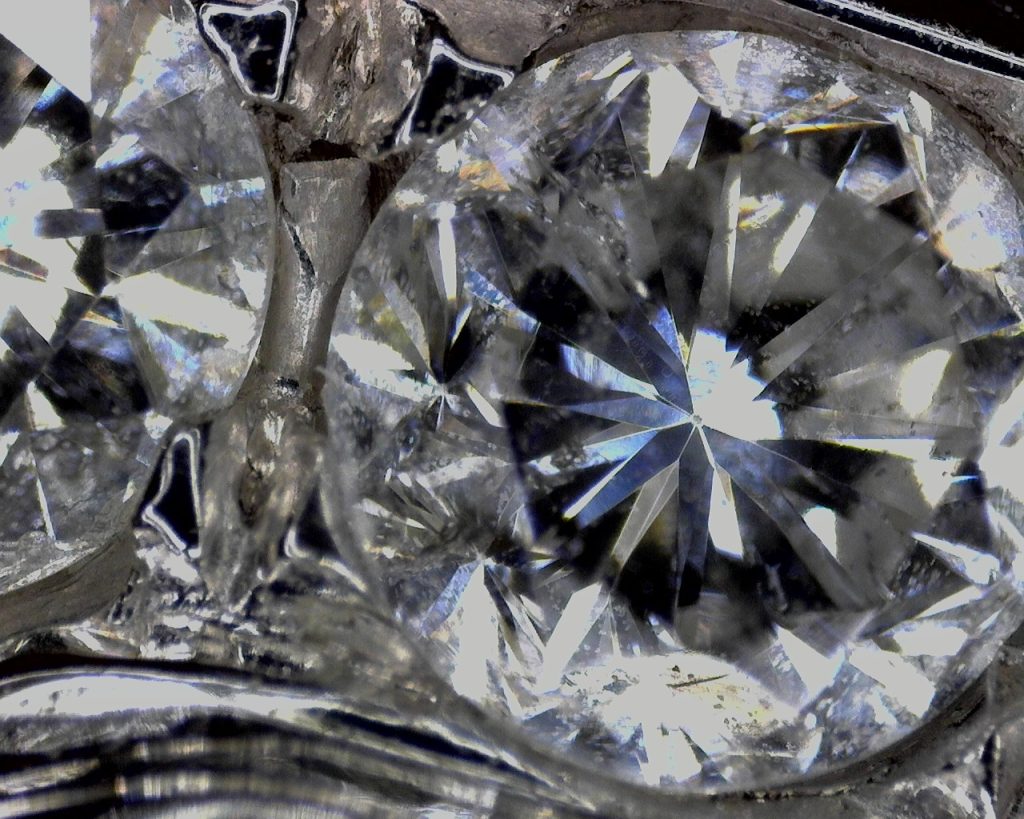Diamonds certainly come in a variety of sizes, colors, and shapes. All diamonds possess intricate combinations of characteristics that make them unique. Most diamonds have minor inclusions and it is these internal markings that are very valuable in identifying your diamond, because there are no two diamonds that have inclusions in exactly the same places.
The other things that you look for are abrasions on the surface, nicks or cavities or cracks that may affect the structural integrity of the diamond. To examine diamond’s clarity, you will need some magnification tool. Dino-Lite Microscope for jewelers has the ability to examine stones, inspect jewelry for repairs, assist in appraisals and make imaging inventory fast and easy.

Using Dino-Lite Digital Microscopes for Diamond Examination
Diamonds, the epitome of brilliance and luxury, require meticulous inspection to assess their quality. While the trained eye of a gemologist remains irreplaceable, Dino-Lite digital microscopes are becoming a valuable tool for examining these precious stones. Let’s delve into how these compact marvels aid in revealing a diamond’s true story.
Traditionally, gemologists relied on loupes and microscopes for diamond evaluation. These tools offer magnified views, but they often lack portability, high-resolution imaging, and user-friendly features. Dino-Lite digital microscopes address these limitations.
Dino-Lite’s Advantages for Diamond Inspection
Dino-Lite microscopes offer several benefits for diamond examination:
- High Magnification: Ranging from 20x to 220x magnification, Dino-Lites allow detailed observation of a diamond’s clarity characteristics, such as inclusions (internal flaws) and blemishes (external surface marks).
- Compact and Portable: Their handheld design makes them perfect for on-the-go examinations, whether at a jeweler’s bench or a gem show.
- Digital Imaging: Captured images and videos can be saved, shared with colleagues for second opinions, or used for documentation and client communication.
- Enhanced Lighting: Adjustable LED illumination ensures optimal lighting for examining different diamond faceting styles and revealing details.
- User-Friendly Software: Dino-Lite’s accompanying software allows for image measurement, annotation, and basic image editing, aiding in detailed analysis.
What Can You See with a Dino-Lite?
By utilizing a Dino-Lite microscope, gemologists can gain valuable insights into a diamond’s quality:
- Clarity Grading: The magnified view helps identify and categorize clarity characteristics like crystals, feathers, and clouds, which are crucial factors in diamond valuation.
- Cut Assessment: Observing the diamond’s faceting symmetry and polish quality becomes easier, allowing for a better understanding of light reflection and brilliance.
- Color Evaluation: While not a substitute for professional color grading equipment, Dino-Lite can aid in discerning subtle color variations within a diamond.
Limitations to Consider
It’s important to acknowledge that Dino-Lite microscopes are not a replacement for a gemologist’s expertise. They cannot definitively identify a diamond’s authenticity or determine its origin. Additionally, some advanced clarity features like internal graining might require more specialized equipment.
In Conclusion: A Powerful Ally in Diamond Examination
Dino-Lite digital microscopes serve as a valuable supplement to a gemologist’s skillset. Their portability, high magnification, and digital imaging capabilities enhance diamond examination, leading to more informed decisions. As technology advances, Dino-Lite may integrate further functionalities, solidifying their place as an essential tool in the world of diamonds.

